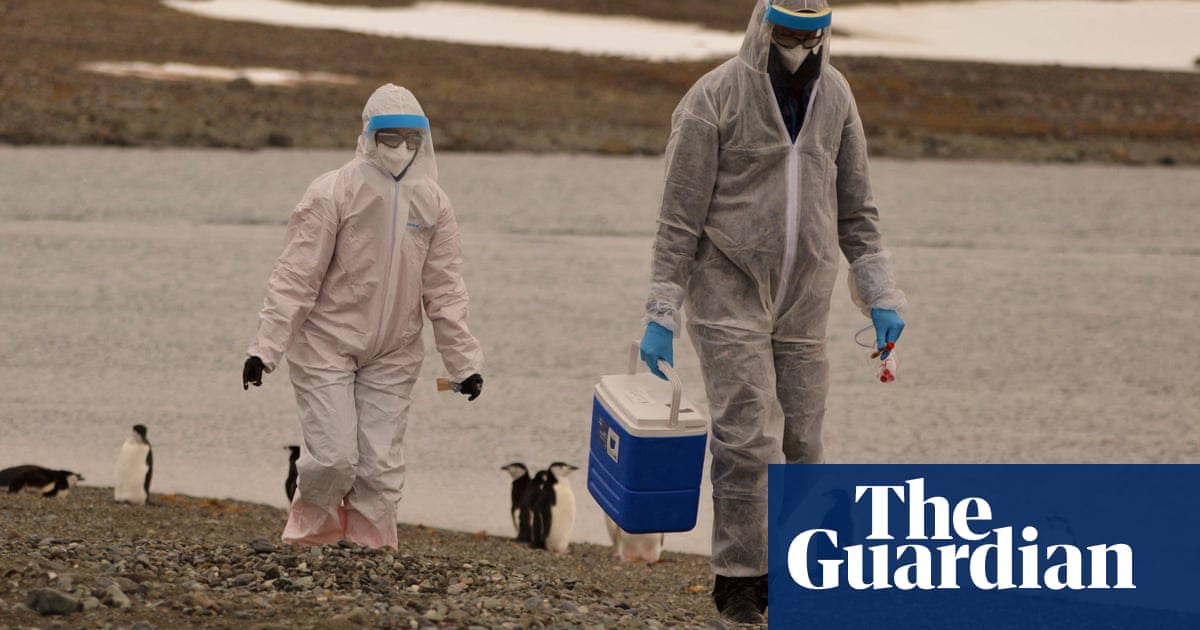- cross-posted to:
- globalnews@lemmy.zip
The World Health Organization has raised concerns about the spread of H5N1 bird flu, which has an “extraordinarily high” mortality rate in humans.
An outbreak that began in 2020 has led to the deaths or killing of tens of millions of poultry. Most recently, the spread of the virus within several mammal species, including in domestic cattle in the US, has increased the risk of spillover to humans, the WHO said.
“This remains I think an enormous concern,” the UN health agency’s chief scientist, Jeremy Farrar, told reporters in Geneva.
Cows and goats joined the list of species affected last month – a surprising development for experts because they were not thought susceptible to this type of influenza. US authorities reported this month that a person in Texas was recovering from bird flu after being exposed to dairy cattle, with 16 herds across six states infected apparently after exposure to wild birds.
The A(H5N1) variant has become “a global zoonotic animal pandemic”, Farrar said.
“The great concern of course is that in … infecting ducks and chickens and then increasingly mammals, that virus now evolves and develops the ability to infect humans and then critically the ability to go from human to human,” he added.
So far, there is no evidence that H5N1 is spreading between humans. But in the hundreds of cases where humans have been infected through contact with animals over the past 20 years, “the mortality rate is extraordinarily high”, Farrar said, because humans have no natural immunity to the virus.
From 2003 to 2024, 889 cases and 463 deaths caused by H5N1 have been reported worldwide from 23 countries, according to the WHO, putting the case fatality rate at 52%.
The recent US case of human infection after contact with an infected mammal highlights the increased risk. When “you come into the mammalian population, then you’re getting closer to humans”, Farrar said, warning that “this virus is just looking for new, novel hosts”.
Farrar called for increased monitoring, saying it was “very important understanding how many human infections are happening … because that’s where adaptation [of the virus] will happen”.
“It’s a tragic thing to say, but if I get infected with H5N1 and I die, that’s the end of it,” he said. “If I go around the community and I spread it to somebody else then you start the cycle.”
He said efforts were under way towards the development of vaccines and therapeutics for H5N1, and stressed the need to ensure that regional and national health authorities around the world had the capacity to diagnose the virus.
This was being done so that “if H5N1 did come across to humans, with human-to-human transmission”, the world would be “in a position to immediately respond”, Farrar said, calling for equitable access to vaccines, therapeutics and diagnostics.
Shit is worrying. I’m extremely ignorant to the science of infectious diseases, but at least from my layman’s point of view, it is extremely concerning how this virus went from exploding across the entire globe in wild animal populations, to now infecting cattle, to then infecting goats in such a short time span… It seems like it is progressively getting worse, and any one of these millions of new infections per day could be the one that mutates just right to be able to hop between humans.
I’m dubious of all the articles stressing the “risk is extremely low, so stay calm” sentiment. That sentiment seems less about giving good advice to make people feel comfortable, and more like a means to minimize panic - which there surely will be if this bug starts hopping between people, and that 50% lethality rate holds steady.
A bird flu pandemic would be less about social distancing, and more about huddling with a shotgun in your basement.

So, I’m also a layman. I have been following bird flu news articles since the massive wild bird deaths started.
For what it’s worth, it didn’t just start jumping to mammals recently. It’s been infecting aquatic mammals for a while. I believe European minks and goats were infected even before that. Luckily, the virus doesn’t currently seem to be infecting the lungs of cattle. Similarly, the one human who contracted it recently had no respiratory symptoms. It seems he touched a cow and then touched his eye, causing the spread.
Based on articles I’ve read, it won’t be a problem for humans until the virus infects the upper respiratory tracts of humans easily.
However, with cattle farmers seemingly taking no precautions other than not milking sick cows (and I’m not even sure I believe that, honestly), it may just be a matter of time before that happens. Every infected cow is a place for the virus to spread and mutate.

Milk from infected cows will be safe once pasteurized. Unfortunately, there appears to be pretty substantial overlap with “raw milk” drinkers, yoga moms, and anti-vaxxers.

Don’t forget, the process of touching the cows to hook them up to the machines is a disease vector. And they seem to be taking no precautions for that.

Sure, but it’s relatively narrow compare to food distribution.

While it is worrying, we already have flu vaccines and the infrastructure to manufacture them at scale. A reformulation will be much, much simpler than creating the COVID mRNA vaccine

The thing that that probably makes it a little less concerning is the “50% lethality”. I doubt you can compare wildlife to humans that have things like medicine and hospitals.

The 50% lethality rate was among the humans who have caught it from an animal. That said, most of those were in developing nations with poor access to medical treatment

Oh so there is already [Animal > Human] but not [Human > Human] it is more concerning than i thought then.

It’s been jumping from animals to humans for literally decades now, some countries have seen outbreaks of dozens of cases in a given year. The only thing different about this year is it’s infecting cattle too, though from what I’ve read it doesn’t seem to be particularly harmful to cows.

50% lethality in humans, not wildlife

the world would be “in a position to immediately respond”


The conspiracy world is ready to respond.
If we’re going to go through this bullshit again the “birds aren’t real” folks better come out in force. If millions are going to die again I at least want to be able to laugh at some asshats trying to argue that it’s fake because birds are just government surveillance drones lol

Oh good, more opportunities for my anti-vax brother to put his children’s lives in danger. Just what we need

With a 52% percent mortality rate, this might well be the last such opportunity. One way or another. 😬

fatality rate at 52%.
The sequel is always harder

And helpfully, the social fabric is so strained at the moment with anti-vax nonsense that even the most basic advice like “stay home if you’re sick” or “try not to cough directly onto the face of anyone” would be meet with insane opposition.

We had a bird flu spread in Spain some years ago, I had the bird flu, and then the normal flu right after it. Spent all my summer vacations in bed.
This is the best summary I could come up with:
The World Health Organization has raised concerns about the spread of H5N1 bird flu, which has an “extraordinarily high” mortality rate in humans.
Most recently, the spread of the virus within several mammal species, including in domestic cattle in the US, has increased the risk of spillover to humans, the WHO said.
“This remains I think an enormous concern,” the UN health agency’s chief scientist, Jeremy Farrar, told reporters in Geneva.
Cows and goats joined the list of species affected last month – a surprising development for experts because they were not thought susceptible to this type of influenza.
He said efforts were under way towards the development of vaccines and therapeutics for H5N1, and stressed the need to ensure that regional and national health authorities around the world had the capacity to diagnose the virus.
This was being done so that “if H5N1 did come across to humans, with human-to-human transmission”, the world would be “in a position to immediately respond”, Farrar said, calling for equitable access to vaccines, therapeutics and diagnostics.
The original article contains 469 words, the summary contains 173 words. Saved 63%. I’m a bot and I’m open source!

